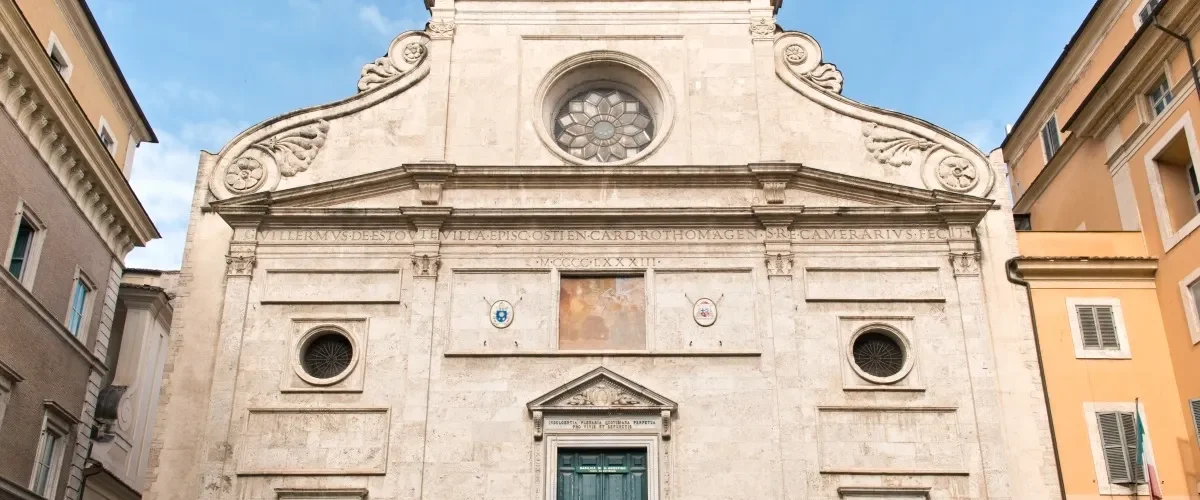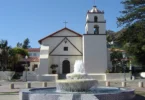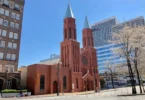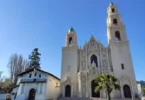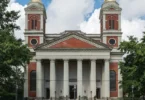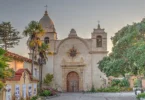Introduction
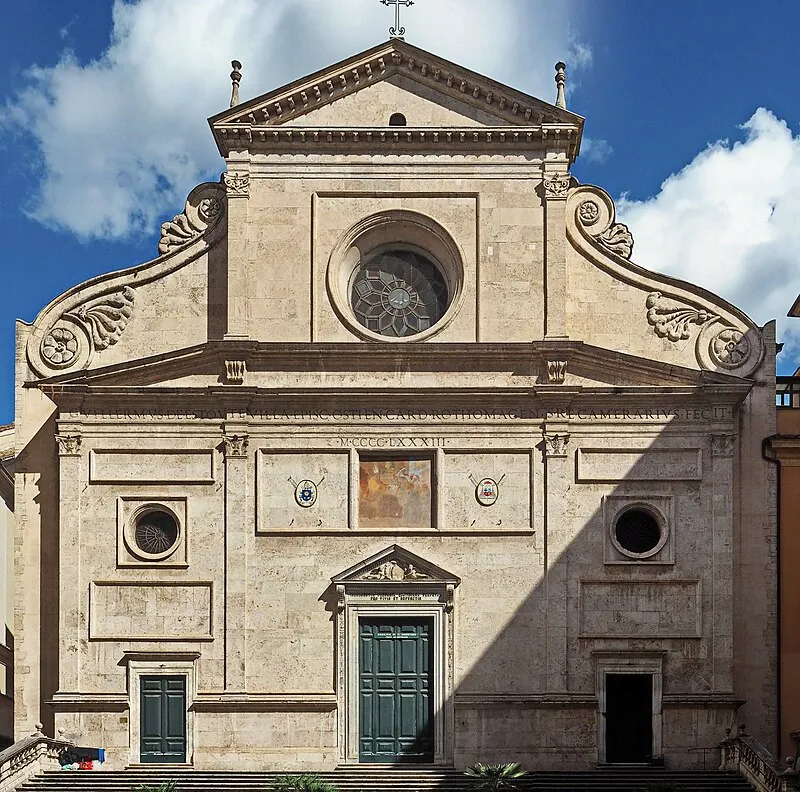
The Basilica of Saint Augustine in Campo Marzio (Italian: Basilica di Sant’Agostino in Campo Marzio; Latin: Basilica Sancti Augustini in Campo Martio) is a Catholic titular minor basilica located in the historic Campus Martius area of Rome, Italy. Dedicated to Saint Augustine of Hippo, it serves as the motherhouse of the Augustinian Friars. The basilica was originally conceived in 1286, with the current structure, completed in 1483, showcasing remarkable Renaissance architecture.
Notably, the basilica houses extraordinary artworks by renowned Roman artists, including Michelangelo Merisi da Caravaggio, Raffaello Sanzio da Urbino, and Giovanni Francesco Barbieri. It is also the burial site of Saint Monica, the revered mother of Saint Augustine.
In recognition of its historical and religious significance, Pope John Paul II elevated the church to the status of a Minor Basilica on 29 October 1999.
The basilica is situated near Piazza Navona in Rome’s Sant’Eustachio district, behind Via della Scrofa. It is also closely connected to the Basilica of Saints Tryphon and Augustine, both of which are important places of worship in this vibrant part of the Eternal City.
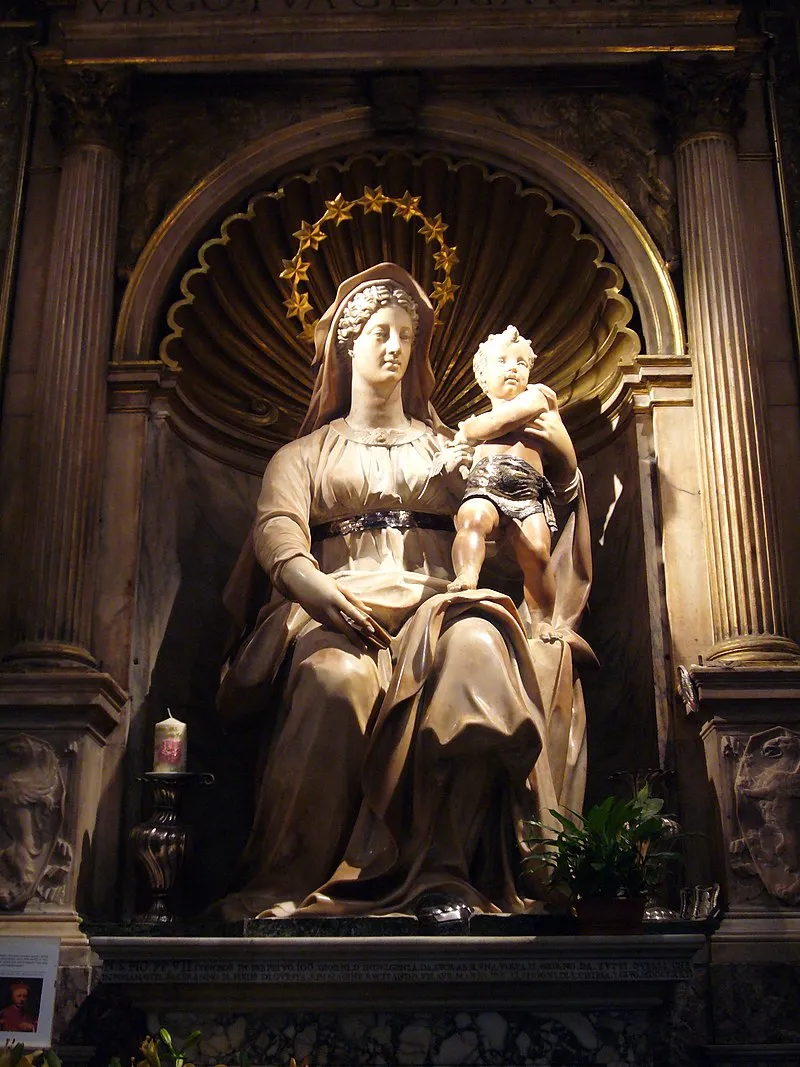
The Basilica of Saint Augustine in Campo Marzio (Italian: Basilica di Sant’Agostino in Campo Marzio) has a rich and fascinating history that spans several centuries. Originally founded by the Augustinian Friars, this church has been a key spiritual and architectural landmark in Rome, Italy, since its inception.
Early Foundations and First Church Construction (1286–1420)
The history of the basilica begins in the late 13th century when the Augustinian Friars were officiating at the Church of Saint Tryphon in Posterula, located near the Tiber River. The Augustinians sought to build a new church for their growing community, and in 1286, they received land for this purpose from Roman nobleman Egidio Lufredi. The friars envisioned a larger and more suitable space for their convent.
Construction of the first church began in 1287, and by the end of the 14th century and the early 15th century, the church was nearing completion. However, the church was too small to accommodate the growing needs of the convent. Additionally, its location near the Tiber River posed practical challenges, as the church was prone to flooding due to its low elevation.
Construction of the Current Basilica (1479–1483)
As a result of these issues, the Augustinians sought the support of Cardinal Guillaume d’Estouteville, who provided the necessary resources to construct a new church. Between 1479 and 1483, the current basilica was built, perpendicular to the earlier structure. Pope Sixtus IV commissioned the new basilica’s construction, and renowned architect Baccio Pontelli, who also designed the Sistine Chapel, was tasked with its design. The church was completed in 1483.
The new basilica was designed in the Renaissance architectural style, offering a more grand and spacious place of worship for the Augustinian community. The facade was designed by Giacomo di Pietrasanta, who used travertine stone salvaged from the ruins of the Colosseum. An inscription on the facade reads:
“Guillermus de Estoutevilla, Episcopus Ostiensis, Cardinalis Rothomagensis, Sanctæ Romanæ Ecclesiæ, Camerarius, Fecit MCCCCLXXXIII”, meaning “William of Stateville, the Bishop of Ostia, Cardinal of Rouen of the Holy Roman Church, Camerlengo, built this in the Year 1483.”
Role as a Parish and Religious Center
The Basilica of Saint Augustine in Campo Marzio has functioned as a parish since its foundation. The titles and responsibilities of the Parish of San Trifone in Posterula were transferred to the new church. It has also been the seat of the Cardinal Title of Sant’Agostino since 1587, a title that has been held by numerous cardinals throughout history.
In recognition of its historical and religious significance, Pope John Paul II elevated the church to the status of a Minor Basilica in October 1999.
Restorations and Preservation
Over the centuries, the basilica has undergone several restorations to preserve its beauty and structural integrity. The first major restoration occurred in 1763, carried out by Luigi Vanvitelli. The second restoration took place in 1870, and the most recent restoration occurred between 1998 and 2000. These efforts have ensured that the basilica remains a vital part of Rome’s religious and cultural landscape.
Cardinal Title and Modern Role
Since 2006, the Cardinal Title of Sant’Agostino has been held by Cardinal Jean-Pierre Ricard. In addition to its role as a religious center, the basilica serves as the station church for the first Saturday of Lent, a key event in the Catholic liturgical calendar.
Legacy and Cultural Significance
The Basilica of Saint Augustine in Campo Marzio remains a key example of Renaissance architecture in Rome. Its artistic and historical value is enhanced by the works of notable Roman artists such as Michelangelo Merisi da Caravaggio, Raffaello Sanzio, and Giovanni Francesco Barbieri, who have contributed to its design and decoration. The basilica is also the final resting place of Saint Monica, the mother of Saint Augustine, making it a significant pilgrimage site for followers of the saint.
This basilica continues to be a living testament to Rome’s rich religious, cultural, and architectural heritage, offering a space for both reflection and spiritual connection in the heart of the city.
Architecture of Basilica of St. Augustine in Campo Marzio, Rome, Italy
Architects: Luigi Vanvitelli, Baccio Pontelli
Architectural Style: Renaissance Architecture
The Basilica of Saint Augustine in Campo Marzio is not only a place of worship but also a treasure trove of remarkable art and architecture. Its walls and interior hold significant works from renowned artists and sculptors, making it a key cultural and historical landmark in Rome.
The Madonna of Loreto by Caravaggio
One of the most famous masterpieces housed in the basilica is the Madonna of Loreto by Caravaggio, also known as Madonna del Pellegrini. This iconic work was painted by Caravaggio as a gesture of gratitude to the church for offering him asylum. The artist sought refuge here in 1600 after having been accused of wounding a notary’s assistant in Piazza Navona. The notary had allegedly paid too much attention to Caravaggio’s lover, Lena, who is said to be depicted in the painting. The Madonna of Loreto remains one of the most significant works by Caravaggio and an important attraction for visitors.
Other Artistic Masterpieces
The basilica also hosts a number of other exceptional works. Among these is Guercino’s painting depicting Saints Augustine, John the Baptist, and Paul the Hermit. Raphael’s fresco of the Prophet Isaiah is another highlight, showcasing the Renaissance master’s unparalleled skill. The Vision of Blessed John of San Facondo by Giacinto Brandi (1656) graces the fifth chapel on the left, while Ecstasy of Blessed Rita of Cascia by Giacinto Brandi (1660) can be found at the altar of the third chapel on the right.
The Apparition of Christ to Saint Clare of Montefalco (around 1751) by Sebastiano Conca adorns the third chapel on the left, which is dedicated to Saint Clare of Montefalco.
Architectural Features and Facade
The church’s Renaissance-style facade was built in 1483 by Giacomo di Pietrasanta, who used travertine from the Colosseum. The facade, which was inspired by the Santa Maria Novella church in Florence, also features two lateral volutes added by Luigi Vanvitelli. The statue of the Madonna and Child, crafted by Andrea Sansovino, is another significant architectural element, along with the Madonna del Parto by Jacopo Sansovino, a statue that is said to possess miraculous qualities.
The statue of the Madonna del Parto is a subject of local legend, believed to be inspired by an ancient image of Agrippina holding little Nero in her arms. The statue, adorned with an abundance of jewels, is humorously referenced in a sonnet by the poet Gioacchino Belli, who criticizes the excessive display of wealth. Additionally, the flowerbed in front of the Madonna’s statue was created by Pio Cellini, the younger brother of sculptor Giuseppe Cellini.
Interior Design

The basilica’s interior is characterized by its three naves, divided by pillars. There are ten side chapels, a transept, and an apse flanked by four other chapels. As one of the first Roman churches to be built in the Renaissance style, the basilica boasts several notable altarpieces. The marble tabernacle of the high altar, designed by Orazio Torriani, is in the Baroque style.
The Bongiovanni Chapel at the end of the left nave contains a series of paintings by Giovanni Lanfranco, executed between 1613 and 1616. These paintings include scenes such as Saint Augustine meditating on the mystery of the Trinity, The Coronation of the Virgin between Saints Augustine and William, and Saint William cared for by the Virgin. Lanfranco also painted several significant pieces in the Chapel of Saint Augustine, including Saint Augustine overthrows the heresies and Saint Augustine washes Christ’s feet (both around 1639).
Tombs and Historical Significance
The basilica is also the final resting place of important figures, including Saint Monica, the mother of Saint Augustine, and Maffeo Vegio da Lodi, a humanist poet. Additionally, it holds the tombs of Lorenzo de’ Medici’s daughter, Contessina de’ Medici, Cardinal Girolamo Verallo, and Cardinal Egidio da Viterbo, a prominent Augustinian humanist.
In the past, the basilica was known for its more unconventional practices, including the admission of courtesans into the church. To maintain decorum, the first pews were reserved for them, thus ensuring they were shielded from the common worshippers. Some of these courtesans, such as Fiammetta Michaelis, the lover of Cesare Borgia, are buried in the church, along with Giulia Campana and her daughters, Penelope and the poet Tullia d’Aragona.
Pipe Organ
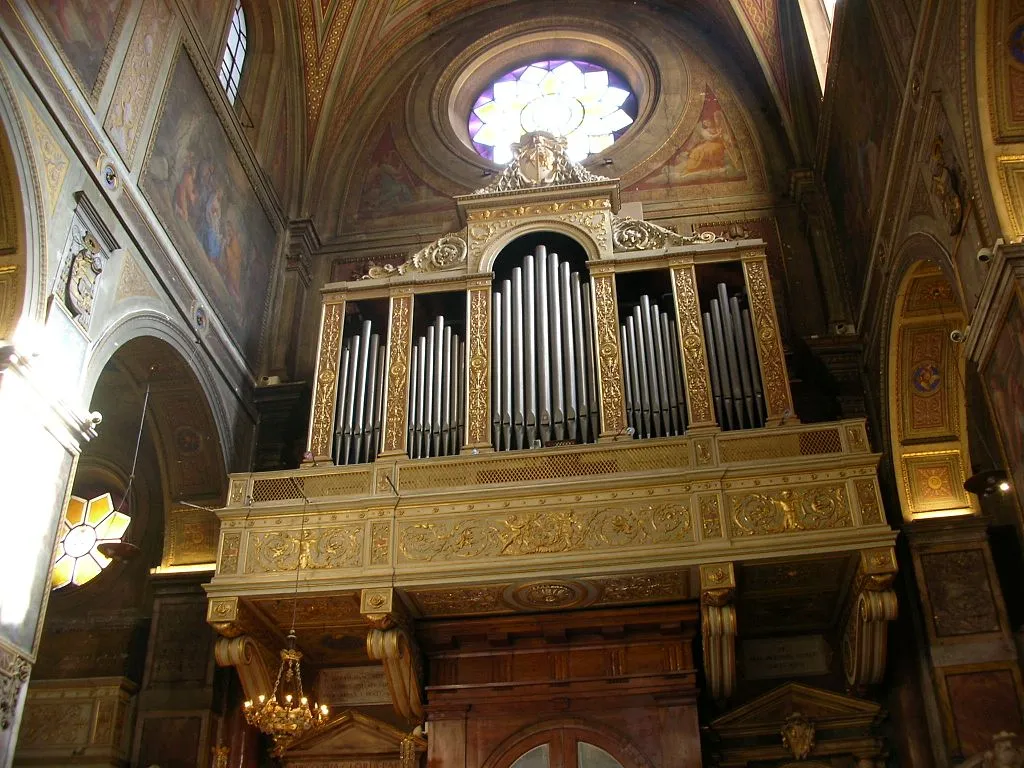
The history of the pipe organ at the Basilica of Saint Augustine spans several centuries, with the first organ dating back to 1431. This early instrument came from the former church of Sant’Agostino and remained in use until 1657-1658, when it was replaced by a new organ built by Giuseppe Catarinozzi and Giuseppe Testa. Unfortunately, this organ was destroyed in a fire. In response, a new organ was constructed by Giacomo Alari in 1682.
In 1838, Cardinal Cesare Brancadoro commissioned a new organ, which was built by Angelo Morettini and later enlarged in 1867. This organ served the basilica until the early 20th century, when it was replaced by a new instrument. In 1905, the renowned organ builder Carlo Vegezzi-Bossi installed a new pipe organ. This organ was later restored between 2005 and 2007 by Vegezzi-Bossi’s successors to preserve its quality and functionality.
Today, the Vegezzi-Bossi organ is located on the special wooden gallery at the counter-façade of the basilica. The instrument features three keyboards, each with 58 notes, and a straight pedalboard of 30 keys. The organ operates using pneumatic-tubular transmission, a mechanism that allows for smooth and reliable performance.
Feast Day
Feast Day : Saint Augustine of Hippo -28th August.
Saint Tryphon’s – 1st February
Saint Augustine of Hippo is celebrated on August 28th, honoring his significant contributions to Christian theology, especially through his works like Confessions. Saint Tryphon’s feast day is on February 1st, commemorating his martyrdom and his role as a protector against diseases. Both saints are venerated for their unwavering faith and influence on Christianity.
Church Mass Timing
Monday : 08:00 AM and 6:30 PM
Tuesday : 08:00 AM and 6:30 PM
Wednesday : 08:00 AM and 6:30 PM
Thursday : 08:00 AM and 6:30 PM
Friday : 08:00 AM and 6:30 PM
Saturday : 08:00 AM and 6:30 PM
Sunday : 08:00 AM, 10:00 AM, 12:00 PM and 06:30 PM
Church Opening Time:
Monday : 9:00 am – 11:30 am, 4:00 pm – 5:00 pm
Tuesday : 9:00 am – 11:30 am, 4:00 pm – 5:00 pm
Wednesday : 9:00 am – 11:30 am, 4:00 pm – 5:00 pm
Thursday : 9:00 am – 11:30 am, 4:00 pm – 5:00 pm
Friday : 9:00 am – 11:30 am, 4:00 pm – 5:00 pm
Saturday : 9:00 am – 11:30 am, 4:00 pm – 5:00 pm
Sunday : 4:00 pm – 5:00 pm
Contact Info
Address:
Basilica of St. Augustine
P.za di S. Agostino, 00186 Roma RM, Italy
Phone : +390668801962
Accommodations
Connectivities
Airway
Rome–Fiumicino International Airport to Basilica of St. Augustine in Campo Marzio, Rome, Italy distance between 33 min (31.1 km) via A91.
Railway
Roma Termini to Basilica of St. Augustine in Campo Marzio, Rome, Italy distance between 14 min (6.2 km) via Viale del Muro Torto.

